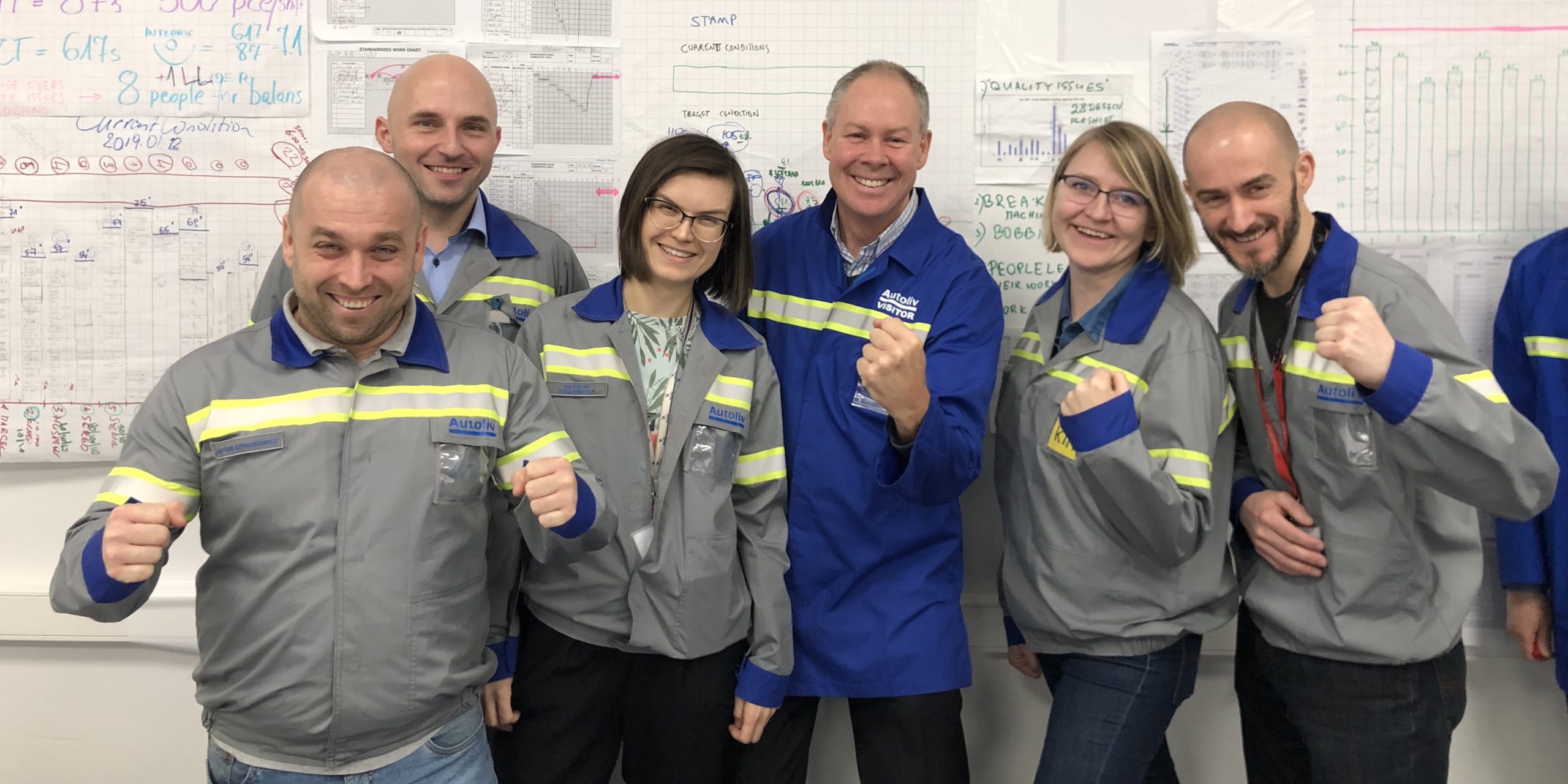
The synergies you need to succeed
FEATURE – While at Starbucks, the author learned the importance of collaboration among the key functions of Operations, HR and Finance to advance a lean transformation.
Words: Karen Gaudet, Director of Learning, Lean Enterprise Institute
Lean thinking teaches that value flows horizontally across departments. On a theoretical level, the holistic nature of lean is not hard to grasp. The concept of “value stream” is simple, yet powerful. But it isn’t until we get down to the nitty-gritty of the daily work that we fully realize the importance of having key business functions join forces to advance the transformation of an organization.
For me, this revelation happened at Starbucks, around one year into our transformation. We hadn’t fully impacted the entire region I was responsible for (New England) – it was still half way in and half way out – but we were making headway. We were going into our standard performance review cycle and it didn’t take long for me to realize that those individuals who had been touched by lean thinking were achieving much better results in terms of business acumen and the ability to solve problems than those who hadn’t. In fact, their problem-solving capability far exceeded what others were doing against the business.
In a scenario where performance evaluation had a real financial impact on the lives of our people, I found it very challenging to walk into the room and equally assess the performance of team members who had been engaged in the transformation and that of those who hadn’t. The fact that our HR and Finance Directors were not fully in tune with what was happening in the region became a real problem. They hadn’t lived the transformation and hadn’t felt the impact on the business (yet).
I quickly become aware of how critical it was to involve those functions in the transformation. I needed the HR Director right by my side, so I asked her to join me on my gemba walks. She also took part in the coaching routines we organized with the different District Managers. We would observe together, do spaghetti charts, and so on. I believed she had to become intimately aware of the impact that the lean work was having on the process and people (not just those at the front line, but also those leading them).
Unless she did that, it would become very hard for me to advocate for my team members and effectively quantify the results. In many cases, the impact of lean on the business (the ROI of lean, if you will) shows up incrementally. It won’t become visible until you reach a critical mass. For example, productivity and inventory gains for a $1 million location are difficult to find and recognize inside a $200 million P&L statement. But that doesn’t make them any less important. Being able to quantify the contribution of the teams to the overall performance of the business was an important recognition of their hard work. It was critical to sustainment, and it was the right thing to do.
The involvement of the Finance team was equally important, because they are tasked with key financial decisions. My experience taught me that if Finance operates as a strategic business partner to the operations team, success is easier to attain. Finance people have a unique understanding of the organization and are able to provide invaluable information on what outcomes you can expect if you pursue certain decisions.
I encouraged the Directors to get directly engaged with those doing the work, so that they could understand why there was a huge difference in the workers’ ability to see and solve business problems once they embrace the lean transformation. It was really impressive to see, among other things, how well people understood the work elements and how they could come up with spot-on solutions to demand fluctuation (an issue that typically kept us up at night).
After a while, it was interesting to notice that a technical understanding of lean thinking and basic problem solving found their way into more functions at Starbucks HQ. They ended up changing the way we interviewed, recruited and hired. As a customer of the Finance and HR functions, I clearly saw that lean ideas and practices began to be embedded into training and orientation material.
A STRATEGIC MOVE FOR THE LEAN TRANSFORMATION
I have learned there is a something of tipping point in a lean transformation, a moment in time when it becomes clear that the behaviors and capabilities that people need are quite different than what they needed up until then. It is in relationship with this that the role of the leader begins to change as well: when this shift occurs and people become more autonomous in their work, it becomes impossible for a manager not to recognize that she is no longer expected to have all the answers and that “something has to change”. That’s the moment we start to expect a different behavior and level of support from our partners in HR or Finance.
Let’s not forget HR is the function tasked with designing training and finding and retaining talent. If they are aware of the needs of the company now that it is transforming itself, they will be able to deliver exactly what is needed. There is a difference between having to recruit people who are really practiced to coming up with answers and looking for people who can just follow directions. We are talking about two completely different skills sets for the leaders, too: facilitating problem solving so that team members are in the best possible place to solve an issue by themselves as opposed to solving problems for people.
In an organization considering embarking on a lean journey, the leaders of key business functions – like Operations, HR and Finance – have to sit at the table: creating synergies between these departments early on in the transformation is of critical strategic importance. Yet, too many organizations still think they can successfully “apply” lean thinking in silos and expect positive, lasting results. Having internal lean people supporting improvements here and there in a business is certainly helpful, but that should never be in lieu of ensuring these fundamental partnerships materialize. In my mind, the fact that they often don’t is one of the key reasons why sustainability is so hard to attain.
Want to Keep Learning?

Read Steady Work by Karen Gaudet, who managed 110 stores as a regional manager for Starbucks. She offers smart, practical business advice and a heartfelt personal story about how a continuous improvement system revitalized the retailer during the global financial crisis and helped employees in Newtown, CT, get through a national tragedy.
THE AUTHOR

Karen Gaudet is Director of Learning at the Lean Enterprise Institute. She has more than 20 years of experience leading, training, and coaching staff and executives in rapid-growth environments. Most recently, she was regional director of licensed operations at Starbucks Coffee Company, where she built a consistent track record of growing the number of retail stores along with the continuous improvement capabilities of people.
Read more


INTERVIEW – What skills do coaches need to successfully support lean transformations in the service sector? Our colleagues from Australia tells us about their experience.


FEATURE – Hoshin is a powerful management practice that aligns the work at different levels to a company’s strategic goals. The author offers a one-page visual summary.


FICTION – Santa is struggling to locate the many children who are hiding from war to deliver them gifts, until the lean Time Benders come to the rescue and help him understand the problem.


INTERVIEW – At the recent UK Lean Summit, we met the Head of Student Services of an English high school. We asked her about the interesting work the school is doing to improve the delivery of education to students with special needs using lean thinking.

